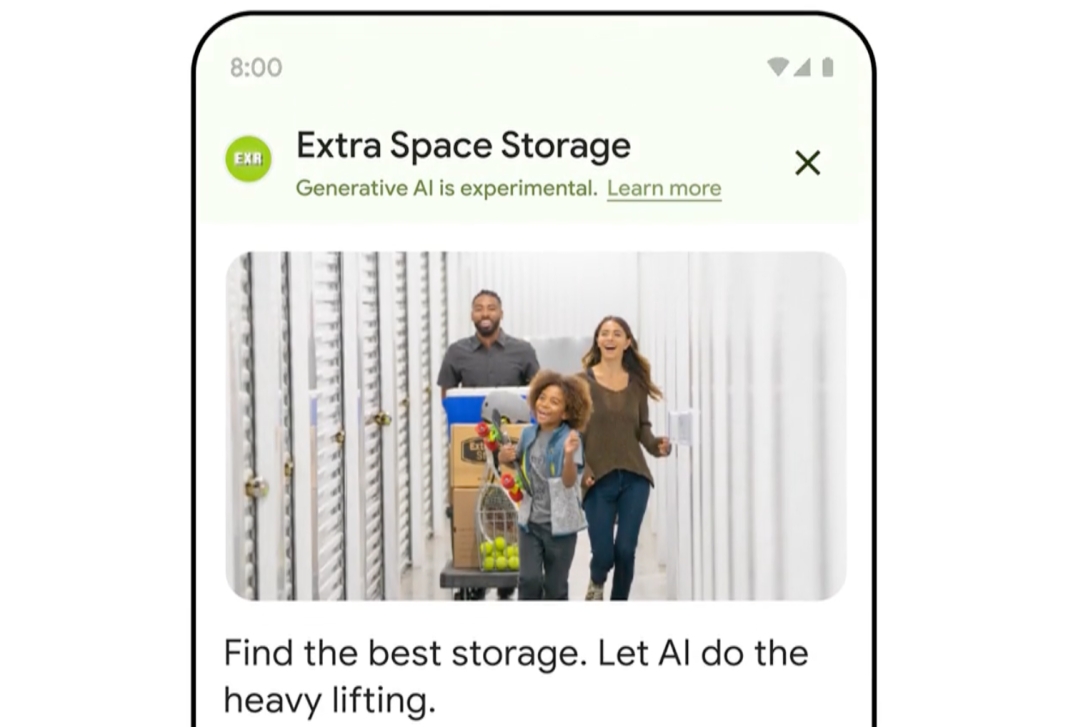The Third Wave – How AI will change the way customers find and choose Self Storage Spaces
The First Wave
It was a simpler time – Self Storage grew from humble beginnings, where ads for storage spaces were placed in local papers to “test the waters” to see if there was any interest in the concept. In the early days, pioneer operators put ads in the Yellow Pages, and the resulting influx of business helped establish the Self Storage industry in Australia. Apart from a few that tried TV advertising, dealing with the Yellow Pages rep once a year was about as much effort as most operators had to endure to get customers to rent spaces. Ads were simple – name at the top, a few bullet points about your services and a big phone number at the bottom of the ad. Those with the largest pockets had the biggest ads, and they, strangely enough, delivered the most business.
Some operators, displaying their adaptability, explored other sections in the Yellow Pages – the precursor to modern-day ‘keywords’ like ‘Removalists’, ‘Box supplies’, and even ‘Funerals’. This was a testament to their resourcefulness as they sought to tap into new customer sources. In the early days of Self Storage in Australia, there was no customer insight research, meaning operators had to try new ways of attracting storers.
The Second Wave
Do you think the Yellow Pages executives saw the Internet as a potential threat to their global dominance of directory advertising? Ah, not really. Most Yellow Pages organisations saw the rivers of gold dwindle faster than they could imagine.
Advertising revenue fell off a cliff for the Directory owners, heralding a change in fundamental spending patterns by Self-Storage operators as more people searched for Storage space on the Internet. Operators took their time to enter the Internet world, some faster than others, and the industry stuck stubbornly to keeping prices close to their chest, fearing competitors would simply undercut them. Initially, it was hard to quantify what business came from the Internet as many were still hedging their business and running ads in an ever-decreasing readership of the Yellow Pages.
29/7/2007 is a remarkable date. It was the world’s introduction of the iPhone, the world’s first smartphone, for which millions lined up and millions were sold. The iPhone brought the power to search for Self-Storage to the palm of your hand.
How many Self-Storage operators were ready for this new way to find spaces? Not many.
Websites needed to be enhanced to become mobile-capable and work well on desktops, meaning operators needed to invest more. By 2008, Google had been launched, and it quickly became the new “Yellow Pages”—the go-to place to find places, stuff, and Storage.
Self Storage operators had to contend with “sponsored ads” on Google, and again, those with the deepest pockets were bidding for the famed top spot in searches for Self Storage. ROI was measurable, and those with sophisticated budgets and, more importantly, tech-savvy agencies helped them prosper. Interestingly, the previous generation metric for determining ad value was cost divided by phone calls. With the Internet, that was no longer the case. Cost per lead became the standard by which online advertising would be measured.
An accepted fact is that Self Storage is a highly localised product. Any examination of the customer base of any site reveals that a high percentage of customers come from a tight radius around the facility, proving that Self Storage is undeniably and always will be a local business. Search terms like “Storage near me” are the most popular searches.
Fundamentally, the local customer base has not changed since the start of the Self Storage business. Still, as much as the iPhone and the Internet changed how we looked for and found Self Storage spaces, times are about to change, and some consider it will be as big a change as the Internet was to the Yellow Pages.
The Third Wave – How AI is changing the way we search for Self Storage
We have explored how the industry developed using the advertising tools of the day—the simple premise of the 5 basics of advertising being used for advertising up to now.
- Name
- Features
- Offer
- Location
- Contact details
AI is being embedded in search functionality. Google is rolling out generative AI with its Gemini AI Engine. Bing has already launched its co-pilot product.
Search will use multi-step reasoning to deliver a more purposeful search that is closer to what you want. AI overviews will be displayed for search results, adding a new dimension of information displayed to consumers. Users can customise their view of this new information, which means new challenges for Self Storage operators in getting their offers to potential customers.
The time-honoured problem for most storers is “How much space do I need?”. Since potential customers started using online searches, companies like R6 Digital have been at the forefront of helping create new ways to solve this core question. Many operators solved it by adopting RapidStor and an integral space calculator in 2008. These tools have been refined over time, and AI will make them even more intuitive. AI will help by using powerful machine learning to look at the pictures of your furniture, calculate the space needed, and then show spaces that suit.
This new way of searching, powered by Generative AI, will significantly change the way consumers search for goods and services. Self Storage operators must change their websites to use this new search methodology. New Ad experiences will be much more immersive and require more creativity to stand out from the crowd. Product videos, 3D renders of spaces, and more will feature.
Google is testing new ad experiences where complex purchase decisions are needed.
Let’s say a potential Storage customer is renovating and searching for “short-term storage.” Clicking an ad for a storage facility may lead to a dynamic experience where AI helps them figure out what they need. Once they share details, like photos of furniture and their budget, Google AI would recommend storage unit sizing and packing materials with a link to purchase them on the website. Will that be your site or your competitors?
The above example is from a Google showcase of potential upcoming products.
That’s a lot different from the way shoppers search now, and it means rethinking content and how it’s displayed on your website.
Other forms of advertising, like YouTube Shorts, may be considered, with over 2 billion users logged in monthly.
There is no doubt that these new AI search models will impact Self-Storage, and advertising opportunities will appear in areas above and below overview results.
Importantly, these new AI tools come with new forms of ROI measurement, which are essential to optimising ad spending on these new products.
There is no doubt that AI will change the way customers find Storage spaces. Just as we lined up and bought an iPhone on June 29, 2007, R6 Digital is at the forefront of generational change in finding Self Storage customers using these new AI tools.
AI is a technical tool that will improve search results for the millions who search for Self-Storage daily.
The factors that delivered search results before may not be enough to deliver results in the future. Past customer opinion and customer reputation will feature higher rankings along with business reputation as AI uses more information to make recommendations rather than just listings.
There is a big difference between the search “Storage near me” and “Recommend the best Storage closest to me”.
AI will force a rethink on customer offerings, and a new emphasis on how AI will find and recommend your site is looming.
Can you make these changes to your marketing and advertising yourself? AI is a new frontier, and changes could relegate your business to the backblocks of the internet.
Let the experts at R6 Digital help your site to navigate these important changes.







